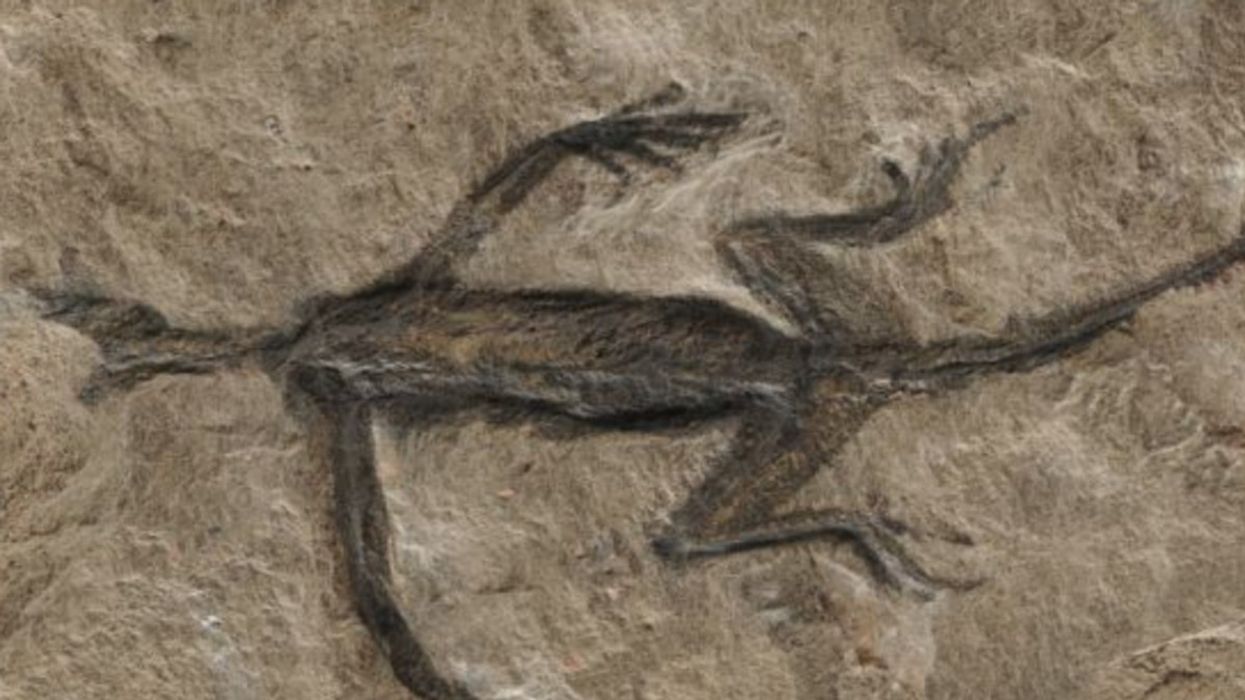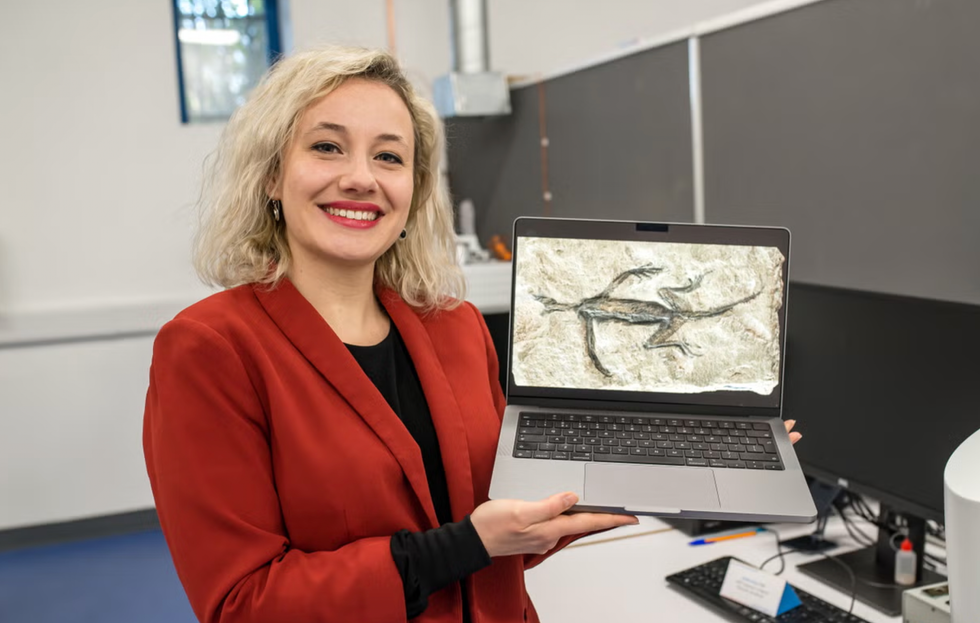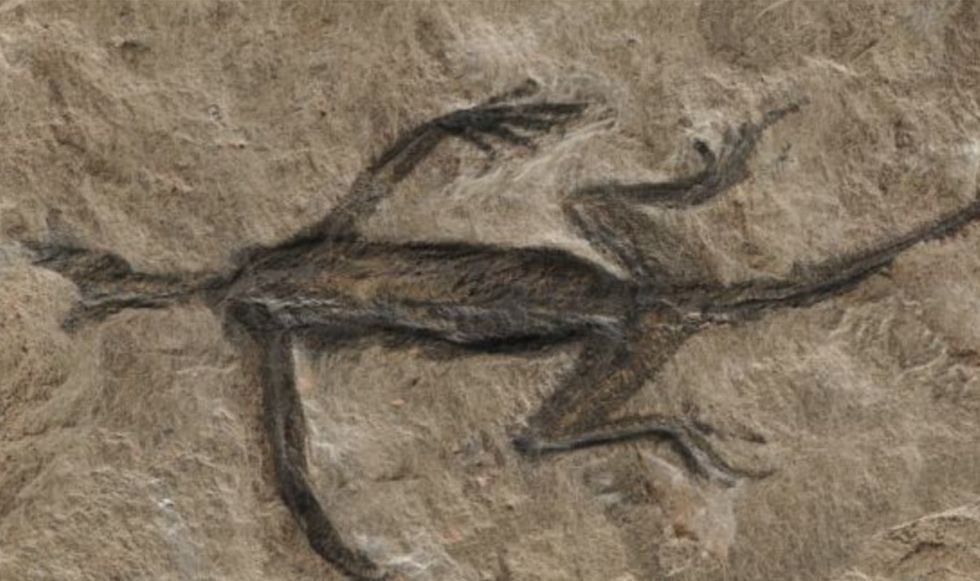Archaeologists 'shocked' and 'saddened' after finally learning the truth behind 280-million-year-old fossil

A shocking analysis revealed that a 280-million-year-old fossil is a fake
|Tridentinosaurus antiquus
Dr Valentina Rossi
The ancient reptile fossil was considered truly remarkable - until now
Don't Miss
Most Read
Latest
Archaeologists are reeling after a new analysis revealed that a 280-million-year-old fossil is a fake.
The preservation of the ancient creature, dubbed Tridentinosaurus antiquus, was considered truly remarkable: it's imprint appeared crystal clear.
The working hypothesis for decades was that the remains had been preserved in ancient soft.
However, a rigorous new analysis has junked that theory, revealing that it's not soft tissue at all - it's black paint.

It was thought to represent one of the oldest lizard fossils ever found and was hoped to shed new light on the preservation process
|Zixiao Yang/University College Cork/PA Wire
The ancient reptile, which dates back 280 millions years ago, is about 20cm (8in) long and was discovered in the Italian Alps in 1931.
It was thought to represent one of the oldest lizard fossils ever found and was hoped to shed new light on how ancient reptiles evolved and how their remains are preserved.
With its body outline appearing dark on the surrounding rock, the reptile’s unique preservation was initially chalked up to a fossilisation process known as carbonisation, which is relatively common among plant specimens but rare among animals.
This led the Tridentinosaurus to be classified as a member of the reptile group known as Protorosauria and its purported fossilised skin, although never studied in detail, gained prominence in news articles and books.
However, the strange features of the ancient animal left many palaeontologists wondering where the reptile belonged and how did it come to be so well-preserved.
Determined to solve this mystery once and for all, a team of researchers in Ireland and Italy analysed the fossil using UV photography, which revealed a coating material on the specimen.
The researchers said that coating fossils with varnishes or lacquers was quite common in the past as a way to preserve the specimen.
So the team was hoping that beneath the coating layer, original soft tissues would be present and would be in good condition.
However, a microscopic analysis then revealed the texture and composition of the material did not match that of genuine soft tissue fossils.
LATEST DEVELOPMENTS

while the 'skin' may have been faked, parts of the fossil are genuine
|Tridentinosaurus antiquus/Dr Valentina Rossi
The researchers said their findings revealed the body outline of the Tridentinosaurus was artificially created with black paint, coated on the carved lizard-shaped rock surface.
The discovery dismayed the archaeology community, but there's a silver lining.
"I think I can honestly say we were all a bit in shock and sad," said paleobiologist Valentina Rossi of University College Cork, who made the soul-destroying discovery while conducting a study of the unusual remains.
He told Science Alert: "But we realised that this is a glimpse in the history of paleontology. Today we can count on powerful techniques that allow us to look at fossils at the molecular level, and this was not possible even 10 years ago."
Also, while the 'skin' may have been faked, parts of the fossil are genuine.
The rear leg bones over which the skin was painted are real, in particular the femurs. It will be difficult to study these bones under the paint, although 3D imaging will be able to help.
This means that researchers can work to understand the real Tridentinosaurus, even comparing it to other fossils that previously may have been dismissed as too dissimilar to represent the same species or genus.
Paleontologists could also revisit the site at which the fossil was found, looking for new specimens, possibly in a better state of preservation.










